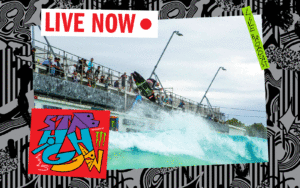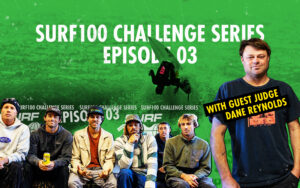(Parts Of) The Surf Industry Relish In Pandemic Boom
Boards and wetsuit sales skyrocket while the apparel industry languishes.
(Author’s Caveat: This article is mostly relevant to Australia)
Since March, when the pandemic’s wrath was truly felt, unemployment has skyrocketed, businesses have shuttered, and economic realities and outlooks have been grim. In the apparel portion of the surf industry, jobs were lost, production slowed, and concerns about the industry’s future were fast-tracked as fiscal conservatism struck the minds of those who frequently buy new threads from their favourite surf brand.
Volcom, Rip Curl, O’Neill’s clothing licensee, and Quiksilver quickly made large numbers of staff redundant, with employees in other companies facing similar job prospects.
The same however wasn’t true for the more essential side of the surf industry: board and wetsuit manufacturers. Particularly in countries like Australia, where Keynesian economic principles were adopted by the government to curb unemployment rates and defibrillate a quickly flatlining economy. The JobSeeker rate (in layman’s terms, the dole) was doubled, and companies were provided with $1500 per employee a fortnight to pay staff who would otherwise be let go.
With watering holes closed and eat-in avocado toast hot spots confined to takeaway, some surfers may have even found themselves in better financial positions than when the pandemic began. Either way, board manufacturers and the more essential parts of the industry (the ones who make the stuff you need to surf) have seen an unprecedented uptick in sales since March.
“Surfboards in the seven-to-nine-feet category skyrocketed by 3,665 percent, compared with the same period last year.” The ABC reported based on a review from Keith Curtain who specialises in ‘action sports’ economies. “Those figures suggest everyone burst onto the market, used their JobKeeper, and bought themselves a new board.” Keith himself said.
These past few months, the growth in sales has abated – now 116% compared to last year’s winter – but it appears to be one of the only industries seeing sales increase amidst the pandemic.
While many already-established surfers may have bought a new addition to the quiver or finally replaced their hole-ridden wetsuit, many in the industry suspect that first-timers and beginners are the ones driving the unexpected sales these past few months.
Damien Goss from On Board Industries told ABC News he expected a large drop off in sales as New South Wales experienced the first wave of coronavirus and subsequent lockdowns. “Then we had the weekend that you might do the weekend before Christmas; it was huge.
“We had people coming in who had lived in Byron Bay for 15 years and never gone surfing.”
An anecdote which makes sense when you consider the category with the biggest growth – seven to nine feet. Yeah, maybe a few big wave bruisers renewed their step-ups, but the majority of those boards were mid-lengths, longboards, and a number of foamies.
“Honestly with the pandemic, it’s the busiest I’ve been.” Coby Perkovich told Stab. “I have the same returning customers, but of late I’ve been getting DM’s about shipping boards to places around Oz. Then I’ve been pushing it [on social media] too which helps.”
Coby Perkovich, doing the thing he does when he isn’t surfing.
Surfing was one of the few activities that wasn’t (for the most part in Australia, and on-and-off in the US) ruled out during strict lockdowns in late March and April. While I myself, along with many others, questioned whether surfing was a reasonable activity to do in well-populated areas (particularly if you were travelling large distances to do it), it was mostly sweet.
Much like bike stores were backlogged with orders from new cyclists, board manufacturers (e.g., JS Industries, Haydenshapes) were dishing out wait times in months rather than weeks.
“There has been a solid increase in demand across all genres of boards.” Hayden Cox of Haydenshapes told Stab. “We’ve seen that in both Australia and the USA, although it may only be a short term spike that will return to normal.
“It’s been unpredictable, but the good news is that we’ve employed more Australian manufacturing staff in the past three weeks to keep up with demand. We’ve also increased staff in the US on the customer service side.”
These impacts weren’t just felt in the shaping bay either. Wetsuit sales, at least for some brands, also reach their peaks. Ryan Mattick, owner of Zion wetsuits, told Stab he’d never sold as many suits as quickly as he did in late March and April. With other wetsuit co’s seeing increases in sales during that period. In addition, I’m sure most surfers would agree that their sessions have been more crowded of late, particularly on weekdays when most would be grinding away at work.
This so-called ‘boom’ hasn’t been passed onto brick and mortar retailers, or the industry at large, but within Australia, board and wetsuit manufacturers have experienced a surprising boost when the rest of the financial world has been counting their pennies and cutting costs to stay afloat.














Comments
Comments are a Stab Premium feature. Gotta join to talk shop.
Already a member? Sign In
Want to join? Sign Up